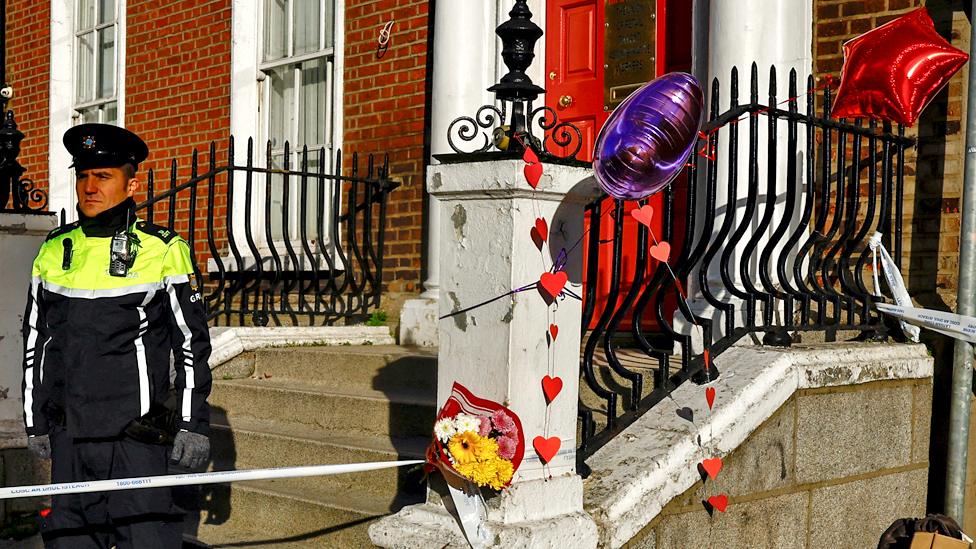Dublin riot: Irish police chief defended by minister
- Published
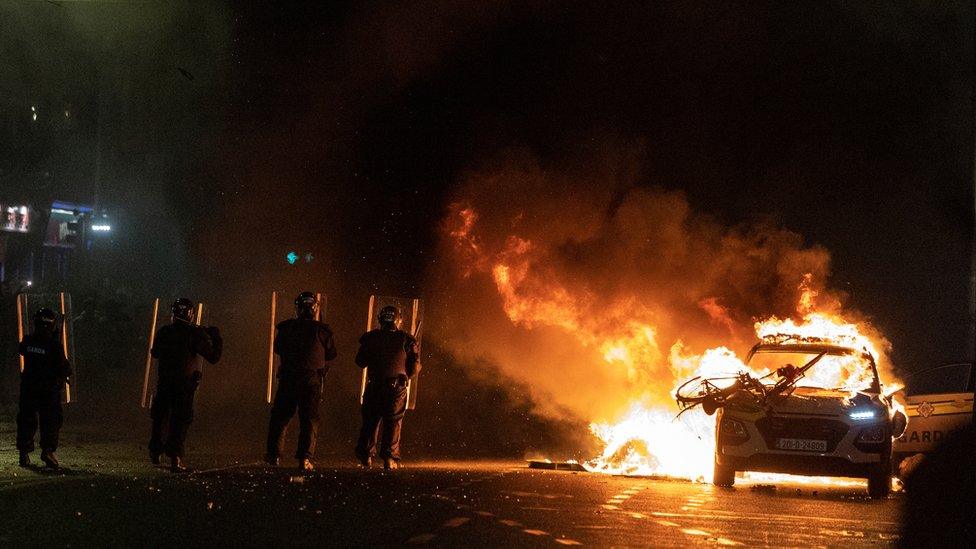
Vehicles were set on fire and shops looted in the disorder on Thursday night
Ireland's police faced an unprecedented situation when a riot broke out in Dublin after a knife attack, an Irish government minister has said.
Paschal Donohoe defended the head of the police force and Ireland's justice minister over criticism that officers were not ready for the violence.
The riot happened on Thursday after three children and a school worker were injured outside a school.
Vehicles were set on fire and shops looted in the disorder.
There have been 48 arrests to date, with more expected as officers trawl through 6,000 hours of footage.
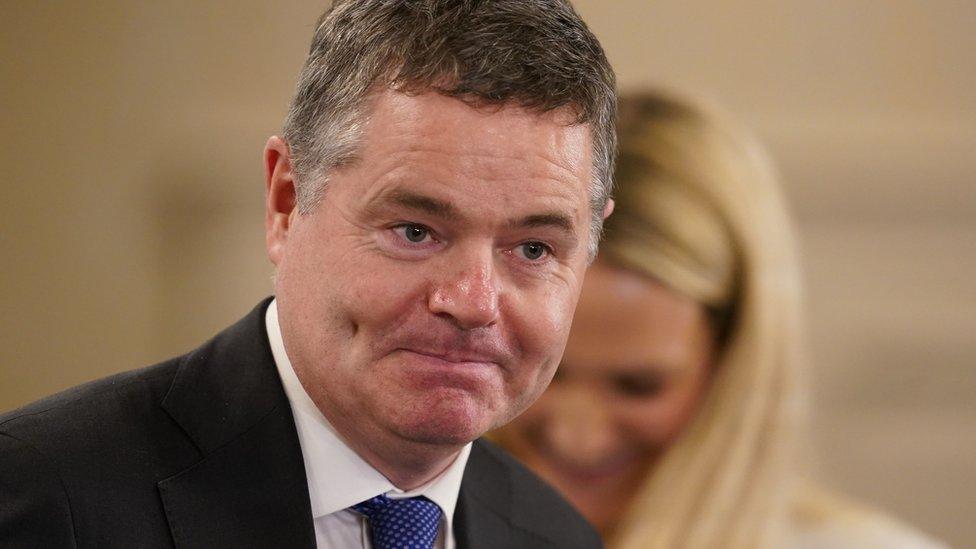
Paschal Donohoe defended the head of the police force and Ireland's justice minister
Irish Justice Minister Helen McEntee said the most riot police in Irish history had been deployed to deal with the violence, while An Garda Siochána (Irish police) Commissioner Drew Harris blamed the rioting on a "lunatic, hooligan faction driven by a far-right ideology".
However Sinn Féin leader Mary Lou McDonald was one of those critical of Ms McEntee and Mr Harris, saying she no longer had confidence in either.
Mr Donohoe told BBC News NI's Sunday Politics programme that he recognised that law and order was not maintained "in our city centre as we would want and the country would expect".
However he praised the police's "exceptional work" in "tough and demanding circumstances".
He added that he fully supported Ms McEntee and Mr Harris.
What happened in the Dublin stabbings?
The attack happened outside the children's school, Gaelscoil Choláiste Mhuire, in the city centre.
It is understood that a group of young children were lining up when they were stabbed by a man at about 13:40 local time on Thursday.
A five-year-old girl and a teaching assistant in her 30s remain in hospital.
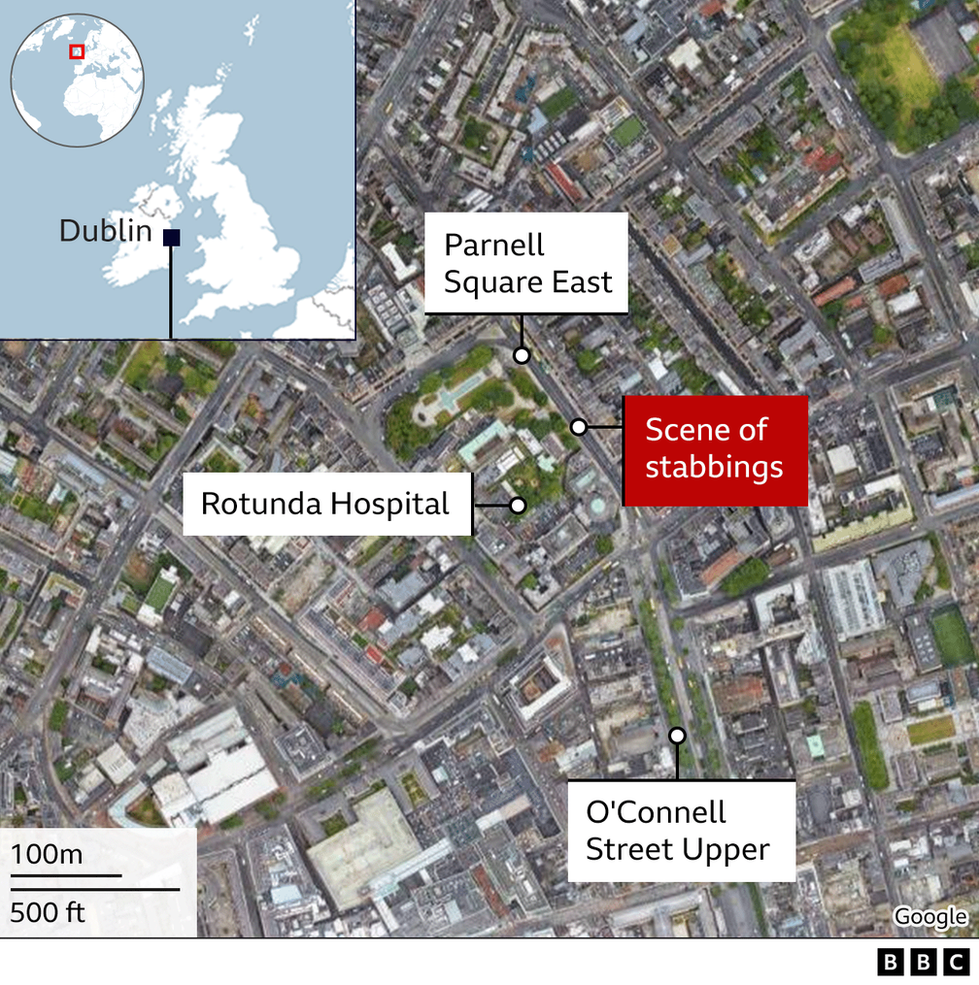
Several members of the public helped subdue the attacker, including a Brazilian food delivery driver who used his bike helmet to fight off the attacker.
A man in his late 40s who was also seriously injured is a person of interest, according to police. They said they are not looking for anyone else in relation to the attack.
In a statement, the school said it was "deeply shocked and saddened" by the incident and that its thoughts were with the pupils and creche worker who were injured.
How did the Dublin riot develop?
Just hours after the knife attack, rioters destroyed 11 police vehicles, while 13 shops were badly damaged and more were looted during clashes with riot police.
Three buses and a tram were also destroyed and several police officers were injured during more than three hours of sustained violence.
The "extraordinary outbreak of violence" had come after "hateful assumptions" were made based on material circulating online in the wake of the stabbings, Garda Commissioner Drew Harris said.
It is understood that included false claims that the attacker was a foreign national.
Sources have indicated to the BBC that the man suspected of carrying out the attack is an Irish citizen who has lived in the country for 20 years.
"These are scenes that we have not seen in decades," said the garda commissioner.
Irish President Michael D Higgins said Thursday night's violence "deserves condemnation by all those who believe in the rule of law and democracy".
Related topics
- Published25 November 2023

- Published24 November 2023

- Published24 November 2023
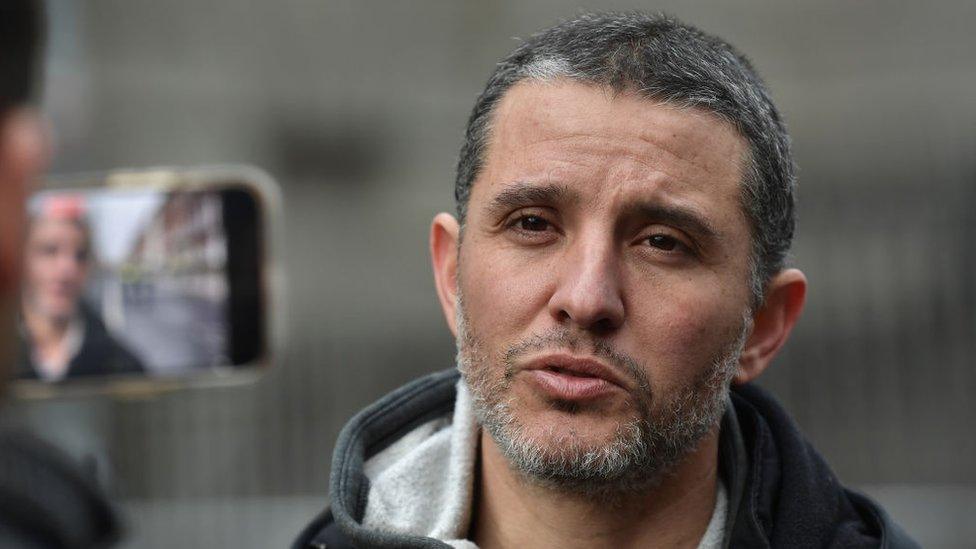
- Published23 November 2023
